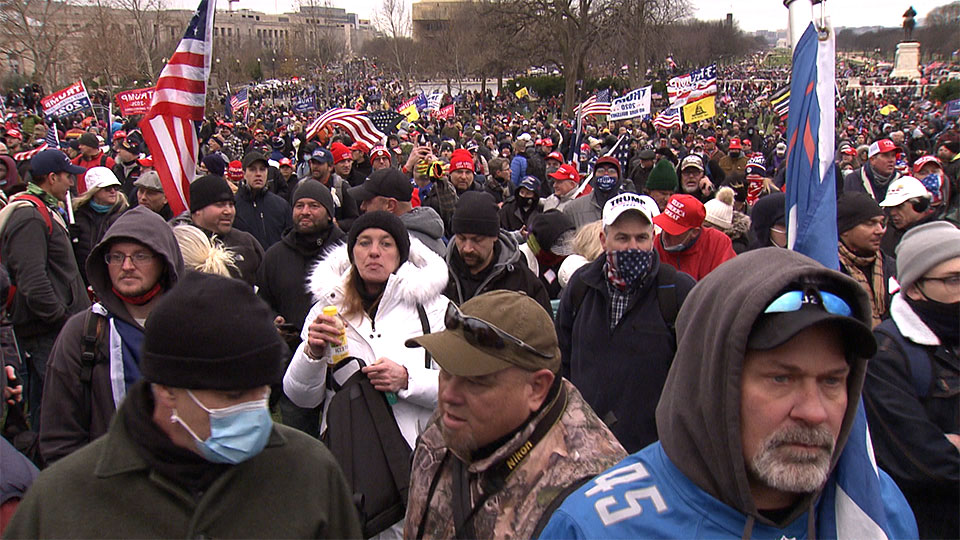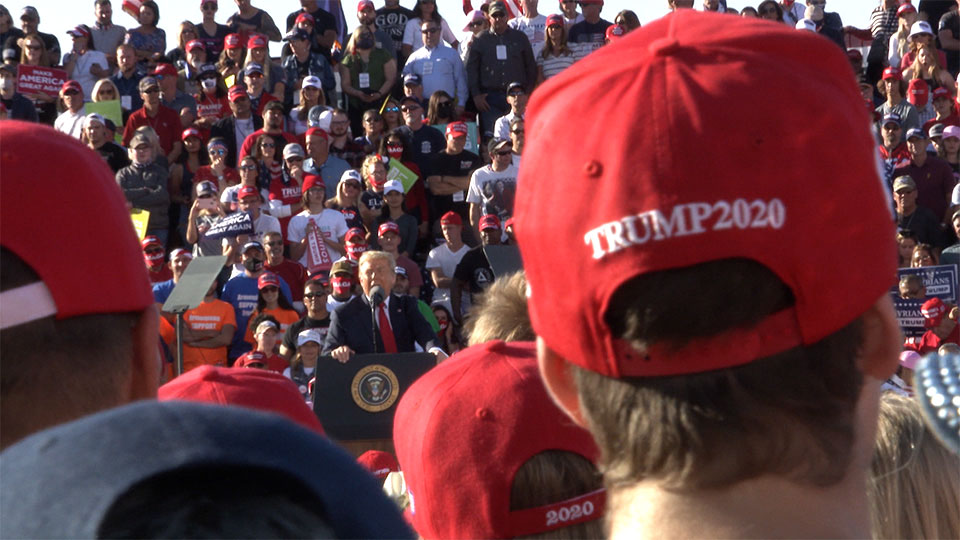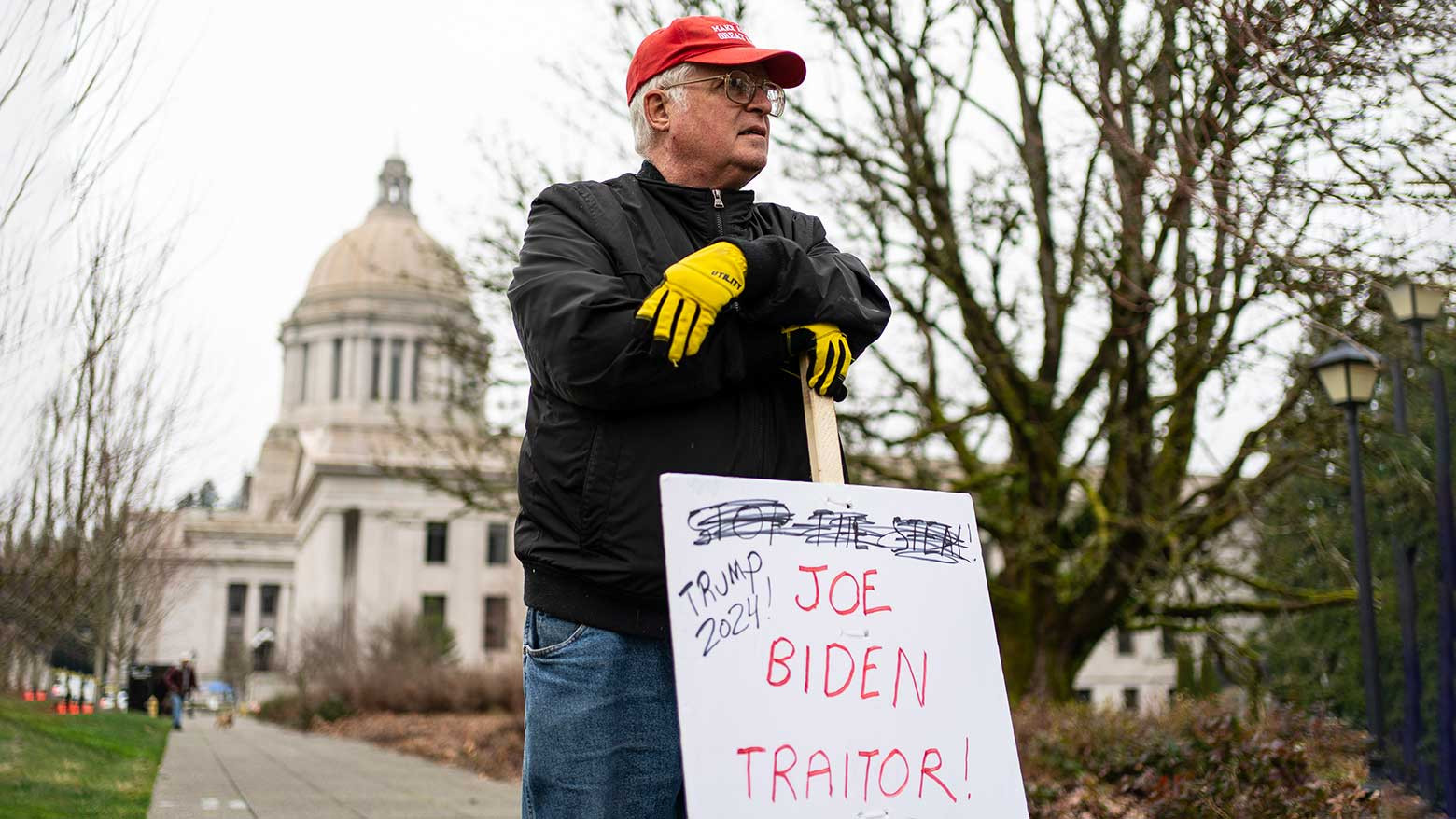There were so many people in the crowd near the Capitol in Washington on January 6 that my mobile phone was getting only spotty reception. But snippets of information trickled in. Rioters had broken into the Capitol building. A woman had been shot. I didn’t know the scale of what was happening, but the atmosphere was intense. One man, spotting our TV camera, demanded to know if we were from the “lame-stream media.” Behind us, people were yelling “fake news.”
I know from three years of reporting in the Middle East how dangerous it can be in the middle of an impassioned crowd. And there was another parallel between the two experiences: they were the only times in my career that people demanded to know which “side” I was on. To a reporter, the question is absurd, but the people I spoke to saw no place for neutrality. You had to be conservative or liberal, pro- or anti-Trump.

A widening rift
President Joe Biden took office in January and promised to unite a country left divided by Donald Trump. But in an AP-NORC poll in February, 65% of Republicans said Biden was not a legitimately elected president.
Events since then seem only to have widened the partisan divide. Biden has issued a flurry of executive orders that reverse his predecessor’s policies, halting construction of a wall on the Mexican border, relaxing immigration rules, and returning to the Paris Agreement to combat climate change.
The second Trump impeachment trial has proven to be another wedge. Trump’s critics wanted him to be held accountable for inciting the violence on January 6. Supporters saw the trial as a sham.
“It’s mere political theatre,” said Bill Fetke, a Republican from Florida. “Democrats impeached him in order to appeal to their supporters.” Fellow Floridian Cris Dosev also saw the trial as politically motivated. “It’s an act of retribution,” he said. “Biden is not unifying the country as he claimed he would, but instead going after Trump and the people who supported him.”
Despite an unprecedented second impeachment, Trump retains the support of a significant swath of the electorate. A survey by US broadcaster CNBC in the days before the trial found that 74% of Republicans want him to stay active in politics, and 48% want him to remain head of the party.
Losing their America
When I speak with people who still support the former president, they often express gratitude. They thank me for taking the time to listen to their worries. And it’s not hard to understand where they’re coming from. They look around and see a society they can barely recognize. Traditional family values are given less importance. Technology has changed the way people communicate and is hard to keep up with. Racial demographics are shifting. For many of the people who voted for Donald Trump, the America they know and love is disappearing.
That sentiment is driving some people to alarming positions. A survey in February by the conservative American Enterprise Institute found that a majority of Republican voters “support the use of force as a way to arrest the decline of the traditional American way of life.” The same survey found that 39% of Republicans believe violence may be necessary.
Matthew Sheffield, who helped establish the conservative media outlet the Washington Examiner, says this worldview explains why many of Trump’s supporters consider the election to have been illegitimate, despite the evidence to the contrary.
“For them, it doesn't matter if it's true or not because it's more important for conservatives to stop liberals from trying to change America,” he says. “Media people assume that people get the facts from news reports and then decide what’s right or take sides, but the reality is the opposite. In a divided America, people have a pre-determined position and believe the arguments and discourse that is used to defend that position.”
And Trump has been a master at fomenting distrust of the media. Sheffield cites the former president’s habit of talking about the size of the audience at a rally, instructing TV cameras to turn around and capture the crowd. The cameras would remain focused on him not to miss his speech, and Trump would claim it was just more proof that the media was trying to conceal his popularity. That’s the “truth mainstream media doesn’t tell you”. Fake news.

Fact checking is censorship
At a recent meeting of Trump supporters in Florida, the main topic was how their social media posts about election fraud were being removed. They believed that partisan tech giants were censoring them.
It is tempting to imagine that people who haven’t accepted the election result are trapped in a filter bubble, only letting in information that supports their view. But that didn’t seem to be the case at the meeting. The participants were very aware of what the mainstream media was saying. They just didn’t believe it. “Their fact-checking is biased,” said one participant.
America’s divisions didn’t begin with Trump but they reached a violent crescendo during his four years in office. President Biden inherits a country that’s split even on the issue of whether he’s the legitimate leader. What may have sounded like a platitude on the campaign trail, a pledge to unite the country, may actually prove to be his greatest challenge.

